This post is a bit too long to fit into an email so please take a look at it on the Substack website or in the app. Thanks, as always, for your interest!
As I write this, the exhibition Stillest Things, featuring photographs by Lea Andrews, Julian Burgin and me, is enjoying its second weekend at the Dysfunctional Gallery (which doubles as Lea’s home in Catford).
This is the first time I have exhibited any of my photographs and it’s been a really interesting experience.
I should begin by thanking Lea for the invitation to be involved and for his generosity in opening his home to Julian and I. Both Lea and Julian, whom I have known for a while but never collaborated with before, have been extraordinarily kind, generous and encouraging. They are both what I would call proper artists, trained in art schools and with previous experience of exhibiting their work. Both have pictures in public collections and I consider myself very lucky to have been included in a show with them.
It was Lea’s idea to invite Julian and I to take part. Lea had exhibited work and performed at the Dysfunctional Gallery in 2022. This time, he was keen to collaborate and, having followed Julian and I on Instagram for a while, asked us if we’d like to share the space with him for the next exhibition.1
After some to-ing and fro-ing by email, we decided to meet to discuss ideas for the show. Lea’s initial suggestion was to use our geographic proximity as a starting point. We all seemed to be making work close to where we lived. Lea was making pastel wall drawings in his studio space at the back of the house, mostly featuring various birds that visited his garden. Julian had been photographing abandoned objects, beautifully illuminated by natural light. Lea had seen my pictures of a walk along the South Circular. I suggested South Circular as a possible title. We created an online document for sharing ideas and pictures.
After more thought, the title seemed to be a bit limiting. Lea had made a drawing of an iceberg and some of Julian’s objects had been photographed in France and Spain.
Whenever my students are struggling with titles for their projects I suggest reaching for a nearby book and using a random number generator to select some words. I decided to adopt a similar strategy, selecting Robert Adams’ fantastic Words That Helped as a starting point. Here’s what I found:
Titles are tricky. Alec Soth’s blog post is instructive on this matter. I was excited by the potential of 56,872 pieces of coal for its bizarre specificity. Forgettable avenues and In all directions captured the everydayness of our work. In the end, Those Stillest Things won the day. It comes from an Emily Dickinson letter of 1869:
These Indian-Summer Days with their peculiar Peace remind me of those stillest things that no one can disturb and knowing you are not at Home and have a sister less I liked to try to help you. You might not need assistance?
The phrase suggested the stillness of photographs, referenced a feeling of ‘peculiar Peace’ and connoted an idea of collaboration and care (‘I liked to try to help you’).
However, this new title which we all loved, contained a challenge for me. The pictures of my trip along the South Circular no longer seemed appropriate. The idea of movement from one side of the city to the other, on foot along the A205, was the guiding principle of the series and Stillest Things suggested something more meditative. I had printed some images and begun to think about their arrangement on a wall:
I needed a better idea, more in keeping with our new title.
I suppose it would have been possible to look through my archive and select other images. But that seemed too safe an option. I don’t really think of myself as having a practice in the way that other photographers and artists do. Whilst I’ve always been interested in the visual arts and now teach photography, I didn’t go to art college and don’t have a disciplined approach to image making. I’m a dilettante at heart, an enthusiastic amateur. I felt I couldn’t, therefore, fall back on my previous work in order to select something coherent. My intuition told me that new pictures were required.
By chance, my parter and I had booked a half term holiday in Rome. The Stillest Things exhibition was due to open on 4 April. If I managed to get some decent images in Italy, I could conceivably get them printed and framed by then. We set off for Rome on Tuesday 18 February, returning on the Saturday.
The main reason for visiting Rome was to see the huge Guido Guidi retrospective at Maxxi. I’ve long admired Guidi’s work and have several of his books. The prospect of seeing a lifetime’s photographs in one show was too good to miss. We visited the exhibition on the first day of our trip, spending most of the day at the gallery:
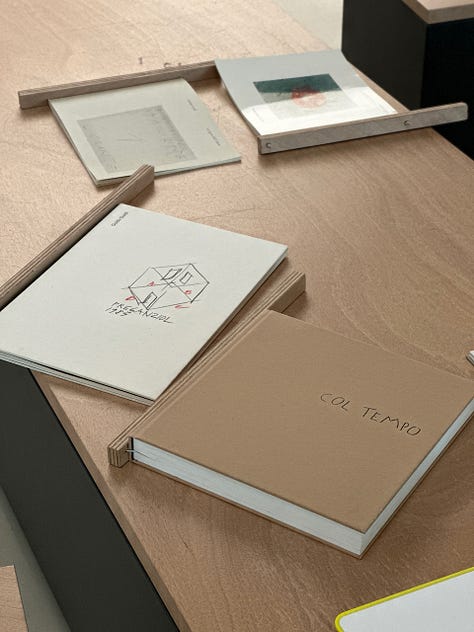
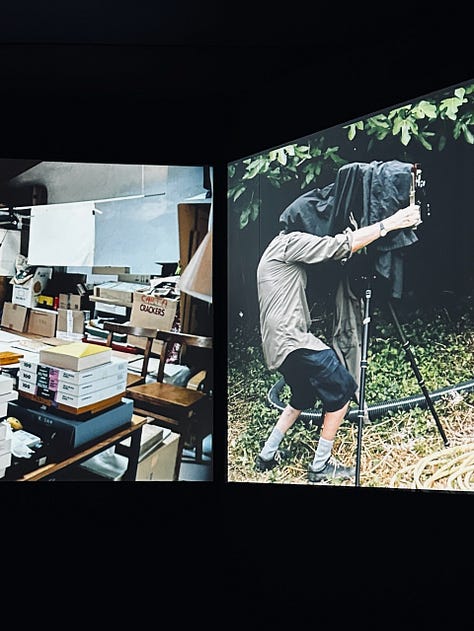
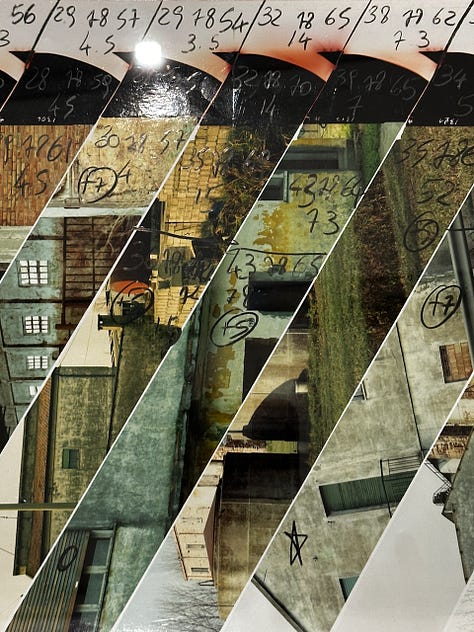
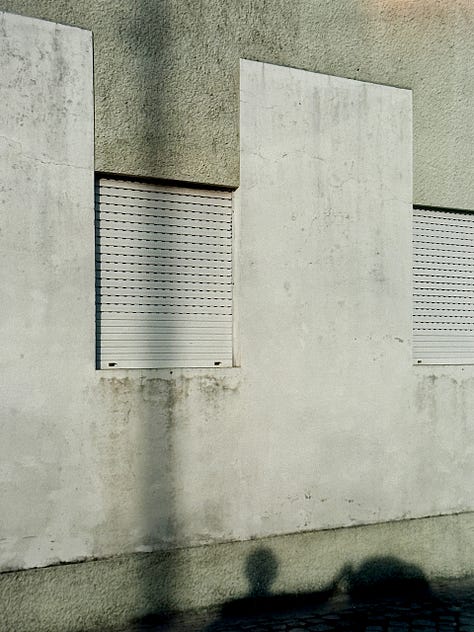
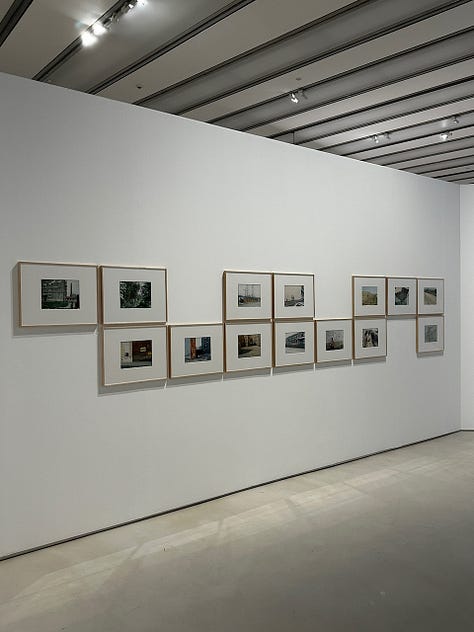
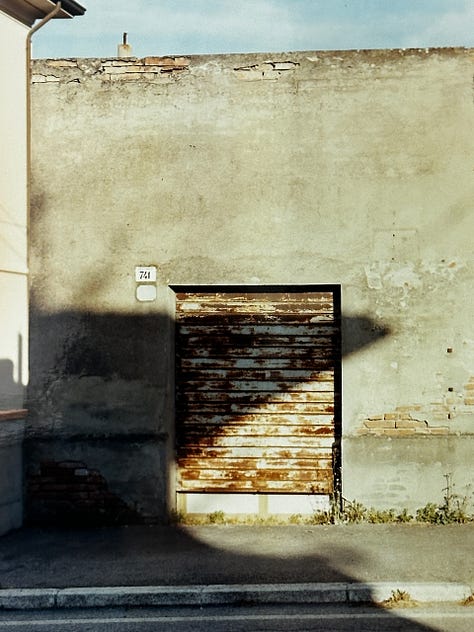
Seeing these magnificent images on the walls of the stunning Zaha Hadid building made a significant impression on me. Like all great photography exhibitions, my immediate desire was to get outside and start making pictures. I’d brought my Rolleiflex TLR and a combination of Kodak Portra 400 colour and Ilford XP2 black and white film with me. I spent the rest of our time in Rome walking the streets and taking photographs of whatever drew my attention.
My old friend, and ex-colleague, Vaughan is a history and history of art teacher. He’s also a super talented painter. A while ago, he proposed a kind of collaboration in which he would make drawings based on photographs of his domestic circumstances, sending them to me without reference to the source images for me to use as starting points for new photographs. He wondered whether the trip Rome might provide some interesting material for these pictures. Here are the sketches he sent me with an accompanying note:
Here they are. I’d intended more from the start, as these were preliminary ideas. But then I thought: these will more than do. All on one handy page; mostly opaque as to what things they represent; set within their own network, allowing for the possibilities of seeing four corners of four drawings, just like standing at a cross-section in Rome and seeing four different aspects; in a square frame, although four of the six are in rectangles as photographs; a tease of colour. And positioned on a desk with scalpel marks.
I don’t tend to question the urge to take a photograph. Using a manual, mechanical camera and film slows me down, helping me to shoot more deliberately. But I don’t worry too much about whatever it is of interest that I’ve seen. I trust my instincts. One of my favourite photographers, Henry Wessel summed this up best:
I try and work before my mind is telling me what to do. Your mind’s always back there saying “Move a little to the left” […] you want to beat that. You can not be thinking. You’re just, “Yes”, feeling, “Yes”. Boom. You’re there.2
When I got back to London and had the films processed I decided to print those I liked best for the Stillest Things show. Two things seemed immediately clear to me:
There were some interesting parallels between some of my photographs and Vaughan’s sketches which I seem to have subliminally absorbed
I had obviously been influenced by seeing Guido Guidi’s photographs in the Maxxi show, extending (ultimately) to the arrangement of my framed prints on the wall
I initially chose ten colour images to print. Most of them were made on the same day in two locations - the working class districts of Testaccio and Garbatella. I ordered 30cm C-type prints of the digital scans from theprintspace. I decided to get them framed locally by Grant at the excellent Limbus Studio. By the time Lea, Julian and I gathered to hang the show only eight of the images seemed to work together in the space.
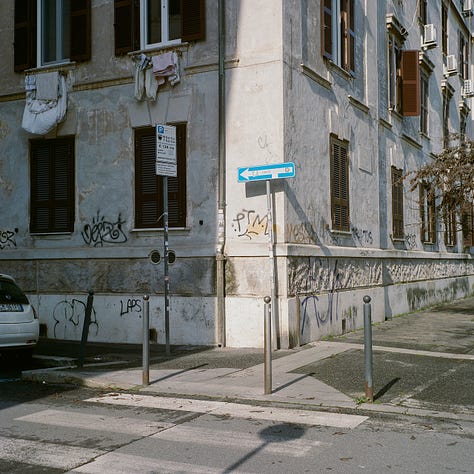
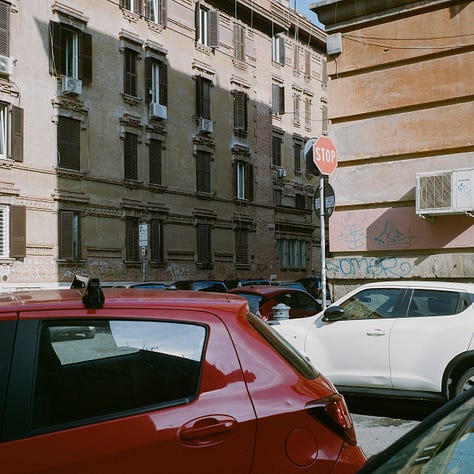
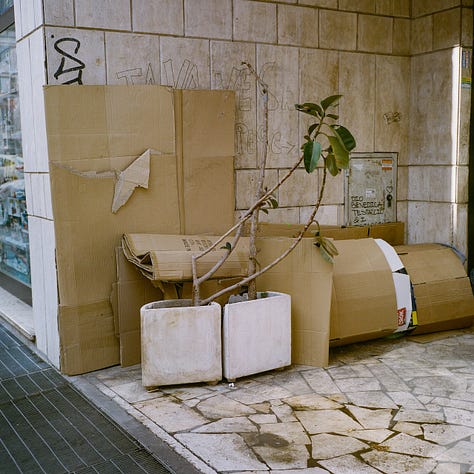
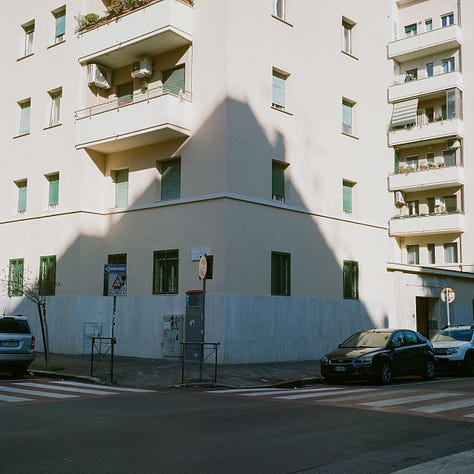
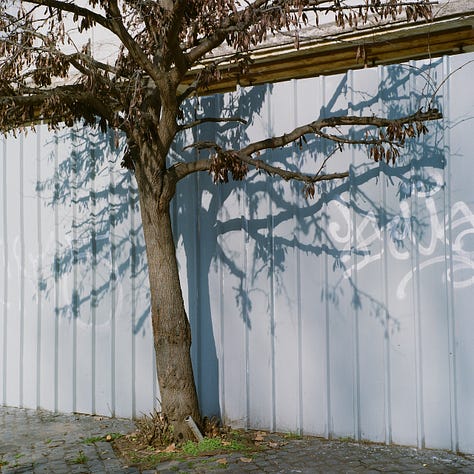
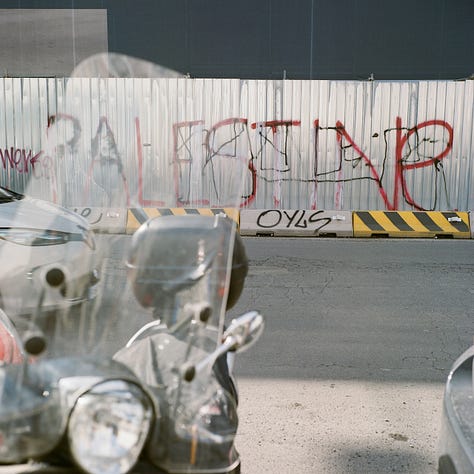
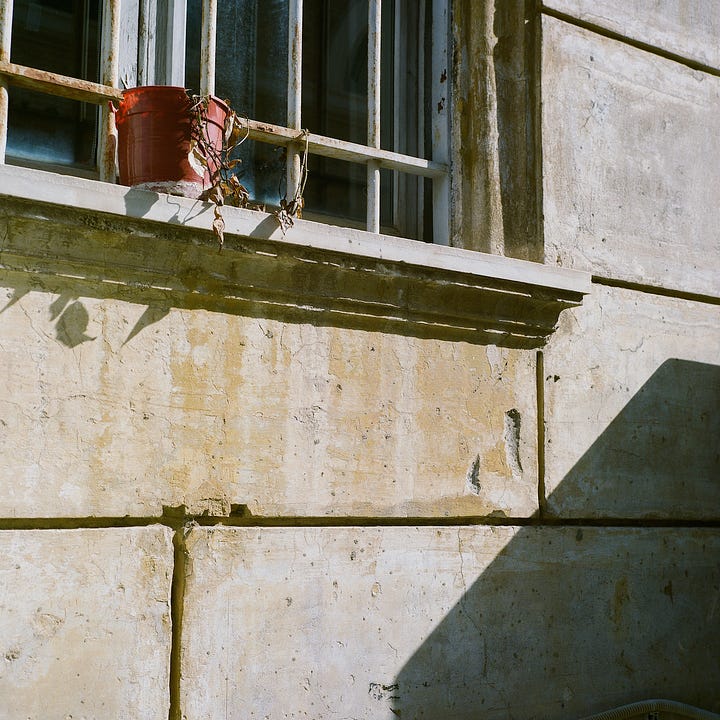
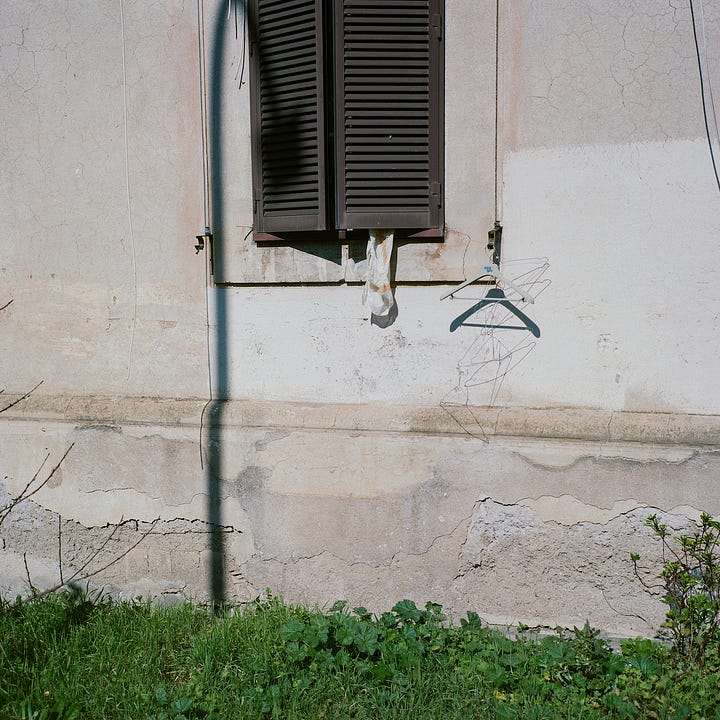
Here are some iPhone pictures of the exhibition:
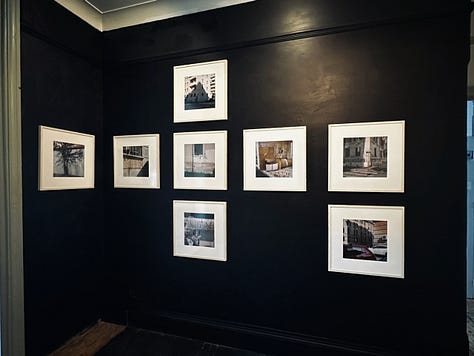
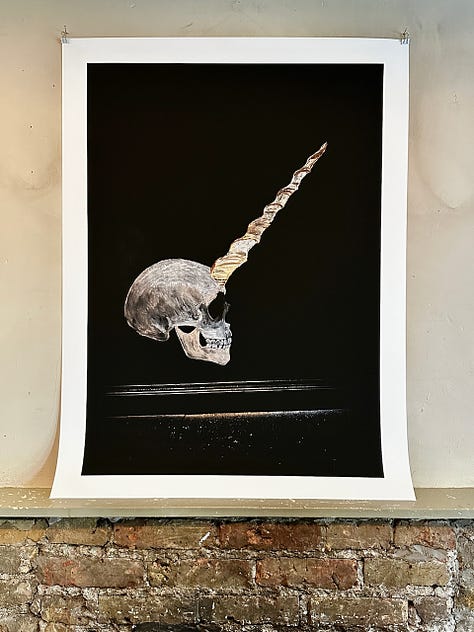
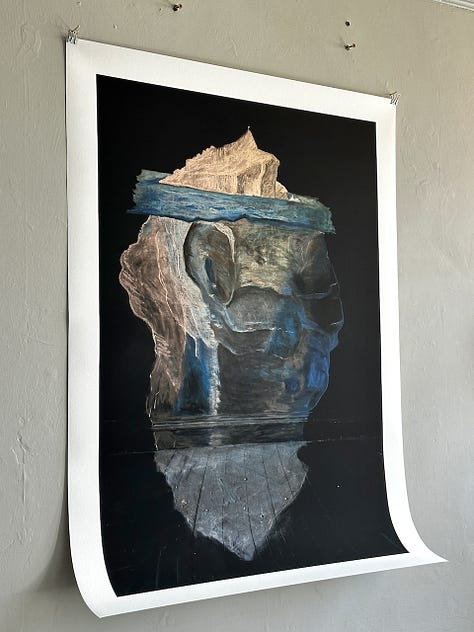
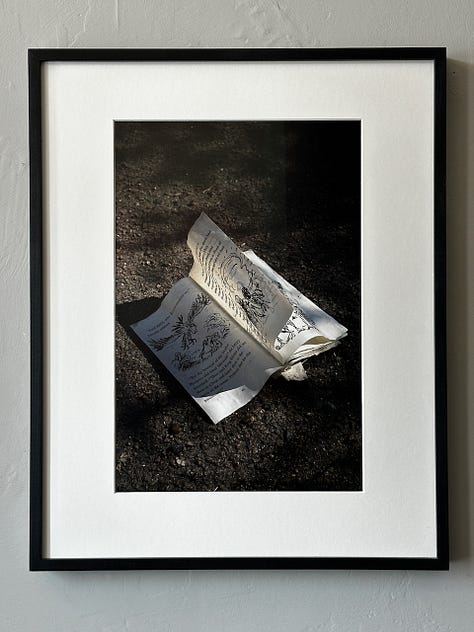
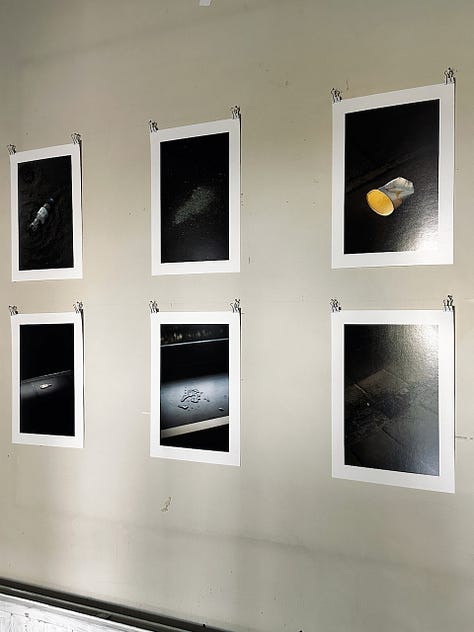
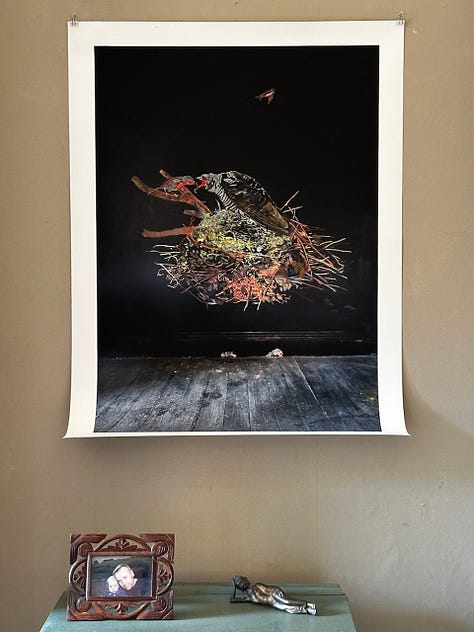
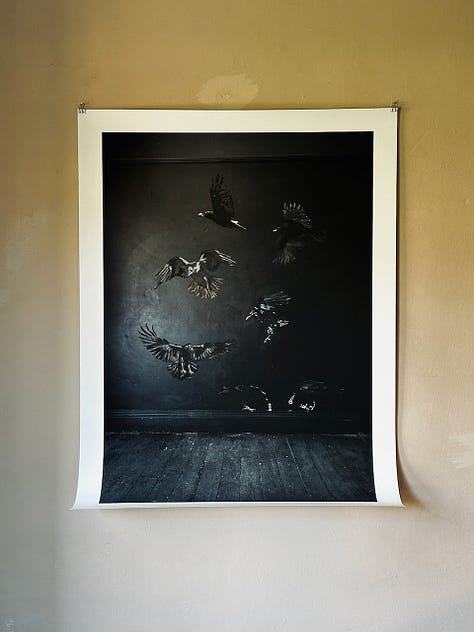
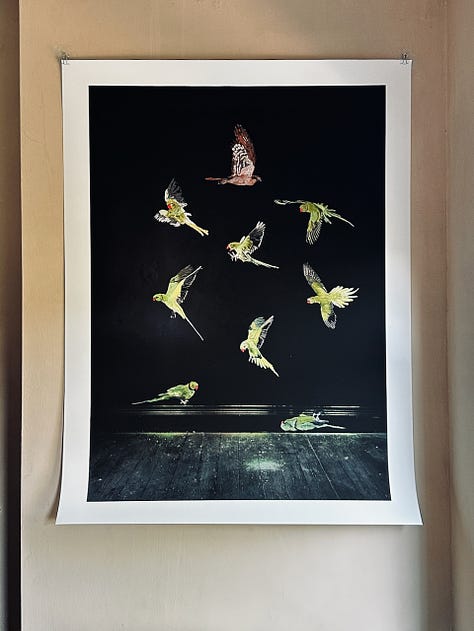
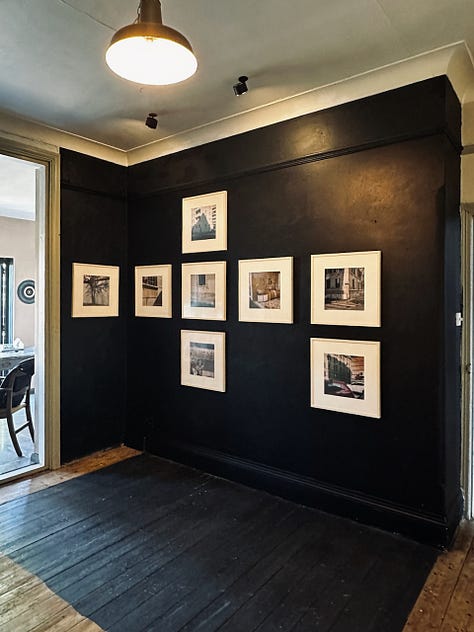
The private view on 4 April was a lovely event. Sharing the work with friends and family was a joy. Visitors offered their own thoughts about the parallels between our pictures. We made a double sided A4 handout with details of our work. Lea’s big photographs (of his wall drawings) looked beautiful, printed expertly on heavy Hahnemühle Photo Rag paper and hanging from clips so that the print curled a little at the bottom, intruding into the viewer’s space. Julian’s photographs glowed in the soft light, lustrous on Baryta paper and inviting close inspection. I’d been a bit concerned about my framed prints on a dark wall but I needn’t have worried. They looked fine.
I’ve been back to the show a couple of times, noticing the light changing in the space and chatting to occasional visitors. Thanks to everyone who has shown an interest and taken the time to visit deepest Catford to look at the work.
As I mentioned at the start of this post, this has been my first experience of taking part in a photography exhibition. I’ve only really touched on what has been a very interesting process. It’s been a real privilege to collaborate with Lea and Julian, both fine gents. If you fancy seeing the work in the flesh, the exhibition is open on 18 and 19 April and by appointment:
I do hope the three of us can collaborate again at some point. If, like me, you’ve ever been a bit diffident about exhibiting your work, my experience tells me that there are very few downsides. I’ve deepened existing friendships, benefited from the wisdom of my fellow exhibitors and, most importantly, had lots of fun.
Go on. What have you got to lose?
P.S. Prints of these and other photographs can be ordered from my website at a very reasonable price!
These posts will always be free but, if you enjoy reading them, you can support my analogue photography habit by contributing to the film fund. All donations of whatever size are very gratefully received.
The three of us have been loosely connected in real life for some time. Lea taught my daughter in primary school and I taught Julian’s daughter GCSE and A-level photography. We all live fairly close in south east London.










Very sorry that I’ve been unable to make this but congratulations on a wonderful collaboration. Thanks for sharing here. Particularly enjoyed the sharing of threads of connections and influences. Nicely done.
What a great idea to use sketches as the base for imagery created